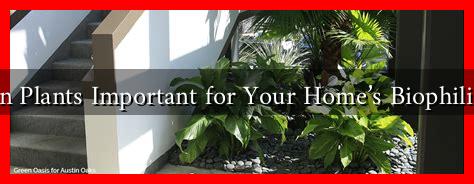-
Table of Contents
Are Green Plants Important for Your Home’s Biophilic Design?
In recent years, the concept of biophilic design has gained significant traction in architecture and interior design. This approach emphasizes the connection between humans and nature, aiming to create spaces that enhance well-being and productivity. One of the most effective ways to incorporate biophilic design into your home is through the use of green plants. This article explores the importance of green plants in biophilic design, their benefits, and practical ways to integrate them into your living space.
The Essence of Biophilic Design
Biophilic design is rooted in the idea that humans have an innate connection to nature. This connection can be fostered through various design elements, including natural light, water features, and, importantly, greenery. According to a study published in the journal *Environmental Science & Technology*, exposure to nature can significantly reduce stress and improve overall mental health.
Benefits of Green Plants in Biophilic Design
Integrating green plants into your home not only enhances aesthetic appeal but also offers numerous psychological and physical benefits. Here are some key advantages:
- Improved Air Quality: Plants can filter toxins from the air, improving indoor air quality. A study by NASA found that certain houseplants can remove up to 87% of indoor air pollutants in 24 hours.
- Enhanced Mood and Productivity: Research from the University of Exeter indicates that employees in green office environments are 15% more productive. This principle applies to homes as well, where plants can create a more uplifting atmosphere.
- Stress Reduction: A study published in the *Journal of Physiological Anthropology* found that interacting with indoor plants can lower blood pressure and reduce feelings of stress.
- Increased Humidity: Plants release moisture vapor during transpiration, which can help maintain humidity levels in your home, making it more comfortable, especially in dry climates.
Choosing the Right Plants for Your Space
When selecting plants for your home, consider factors such as light availability, maintenance requirements, and your personal aesthetic preferences. Here are some popular options:
- Snake Plant (Sansevieria): Known for its air-purifying qualities, this hardy plant thrives in low light and requires minimal care.
- Pothos (Epipremnum aureum): A versatile vine that can grow in various lighting conditions, pothos is perfect for hanging baskets or shelves.
- Peace Lily (Spathiphyllum): This beautiful flowering plant not only adds elegance but also helps filter indoor air pollutants.
- Spider Plant (Chlorophytum comosum): Easy to care for and great for beginners, spider plants are known for their ability to purify the air.
Integrating Plants into Your Home’s Design
Incorporating plants into your home’s design can be done in various creative ways:
- Vertical Gardens: If space is limited, consider a vertical garden or living wall. These installations can serve as stunning focal points while maximizing greenery.
- Plant Shelves: Use shelves to display a variety of plants at different heights, creating visual interest and depth in your space.
- Window Sills: Utilize natural light by placing plants on window sills, where they can thrive and enhance the view.
- Grouping Plants: Create a mini indoor garden by grouping plants of varying heights and textures together for a lush, inviting look.
Case Studies and Real-World Examples
Several companies and institutions have successfully integrated biophilic design principles into their spaces. For instance, the Amazon Spheres in Seattle feature over 40,000 plants from around the world, creating a unique environment that promotes creativity and collaboration among employees. Similarly, the Bosco Verticale (Vertical Forest) in Milan showcases residential towers adorned with thousands of trees and plants, significantly improving air quality and biodiversity in the urban landscape.
Conclusion
Incorporating green plants into your home’s biophilic design is not just a trend; it is a powerful way to enhance your living environment. The benefits of improved air quality, increased productivity, and reduced stress make a compelling case for adding greenery to your space. By choosing the right plants and creatively integrating them into your home, you can create a sanctuary that fosters well-being and a deeper connection to nature. As we continue to navigate urban living, embracing biophilic design through green plants may be one of the most effective ways to bring the outdoors in.
For more insights on biophilic design and the benefits of plants, visit Biophilic Design.

